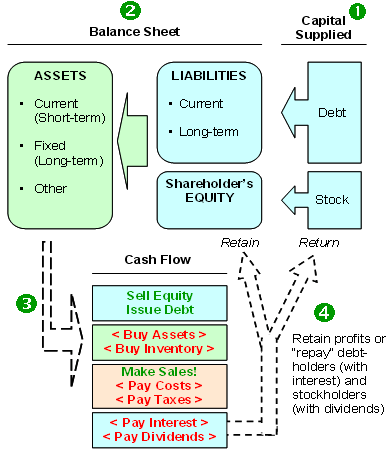A complete guide to the basics of fundamental analysis!
Post on: 28 Август, 2015 No Comment

Fundamental Analysis Definition
Fundamental analysis is a stock valuation method that uses financial and economic analysis to predict the movement of stock prices.
The fundamental information that is analyzed can include a company’s financial reports, and non-financial information such as estimates of the growth of demand for products sold by the company, industry comparisons, and economy-wide changes, changes in government policies etc.
General Strategy
To a fundamentalist, the market price of a stock tends to move towards it’s real value or intrinsic value. If the intrinsic/real value of a stock is above the current market price, the investor would purchase the stock because he knows that the stock price would rise and move towards its intrinsic or real value
If the intrinsic value of a stock was below the market price, the investor would sell the stock because he knows that the stock price is going to fall and come closer to its intrinsic value.
All this seems simple. Now the next obvious question is how do you find out what the intrinsic value of a company is? Once you know this, you will be able to compare this price to the market price of the company and decide whether you want to buy it (or sell it if you already own that stock).
To start finding out the intrinsic value, the fundamentalist analyzer makes an examination of the current and future overall health of the economy as a whole.
After you analyzed the overall economy, you have to analyze firm you are interested in. You should analyze factors that give the firm a competitive advantage in its sector such as management experience, history of performance, growth potential, low cost producer, brand name etc. Find out as much as possible about the company and their products.
Do they have any core competency or fundamental strength that puts them ahead of all the other competing firms?
What advantage do they have over their competing firms?
Do they have a strong market presence and market share?
Or do they constantly have to employ a large part of their profits and resources in marketing and finding new customers and fighting for market share?
After you understand the company & what they do, how they relate to the market and their customers, you will be in a much better position to decide whether the price of the companies stock is going to go up or down.
Having understood the basics of fundamental analysis, let us go into some more details.
When investing in the stocks, we want the price of our stock to rise. Not only do we want our stock price to rise, we want it to rise FAST! So the challenge is to figure out: which stock prices are going to rise fast?
Some stocks are cheap and some are costly. Some are worth Rs.500 and some are even worth 50paise. But the price of the stock is not important. The price of the stock does not make a stock good to buy. What is important is how much the price of the stock is likely to rise.
If you invest Rs.500 in one stock of Rs.500 and the price goes up to Rs.540 you will make Rs.40. However, if you invest Rs.500 in a 50paise stock, you will have 1000 stocks. If the price of the stock goes up from 50paise to Rs.1, then the Rs.500 you invested is now Rs.1000. You made a profit of Rs.500.

If you understand this, you can see that the price of the stock is not important. What is important is the rise in the stocks price. More specifically the percentage rise in the stock price is important.
If the Rs.500 stock becomes worth Rs.540, then that is a 8% rise. This 8% rise only makes us Rs.40. On the other hand when we invest the same Rs.500 in the 50paise stock and the stock price goes up to Rs.1, it is a 100% rise as the stock price has doubled. This 100% rise makes us Rs.500.
The point is that when picking a company, we are interested in a company whose stock price will rise by a large percentage.
Please note: Looking at the above paragraphs, it may seem like a good idea to buy all the really cheap 50paise and Rs.1 stocks hoping that their price will rise by 100% or more. This sounds good, but it can also be really really bad some times! These really small stocks are very volatile and unless you know what you are doing, do NOT get into them.
However, the point to be noted is that we are interested in stocks that will have the highest % rise in the stock price. Now the question is, how do you compare stocks. How do you compare a stock worth Rs.500 to a stock worth 50paise and figure out which one will have a higher percentage rise.
How do you compare two companies that are in different fields and different industries? How do you know which one is fundamentally strong and which one is week?
If you try to compare two companies in different industries and different customers it is like comparing apples and elephants. There is no way to compare them!
So fundamental analysts use different tools and ratios to compare all sorts of companies no matter what business they are in or what they do!
Next let us get into the tools and ratios that tell us about the companies and their comparison.














